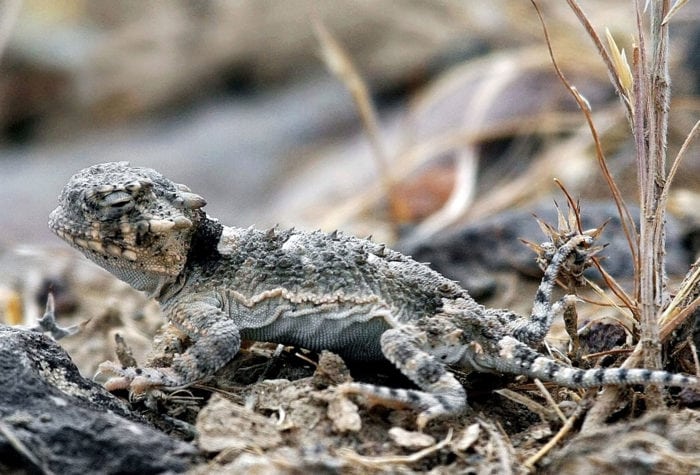Author: Ryan Houston | Published: December 5, 2023 | Category: Deep Dive
A deep dive into the Wilderness vs. National Monument pathways
Even the most intrepid desert traveler can get lost among the sinuous canyons and forked tributaries of the Owyhee Canyonlands. Miles upon miles of rivers slice through this rugged, remote landscape in the far southeastern corner of Oregon – and sometimes it’s unclear which ravine to follow.
In much the same way, the political pathways Oregon Natural Desert Association is navigating to secure permanent protection of the Owyhee Canyonlands can be complex and confusing – complete with false summits, drenching cloudbursts and moments of serenity when rays of sunshine break through the storm.
As we’ve discussed in recent months and has been reported in a variety of news outlets, ONDA is simultaneously leading the way on two parallel paths to protect the Owyhee: The first pathway is federal legislation that would designate more than one million acres of public lands as wilderness; the second pathway is a Presidential proclamation that would establish a national monument for the same area.
Why the two paths? Let us explain.
Our Goal
First, let’s begin with ONDA’s conservation goal: We seek permanent protection for the vast expanses of sagebrush grasslands, rushing rivers and deep, rugged canyons of Oregon’s Owyhee Canyonlands.
When we achieve this goal, millions of acres will be protected from the disturbance, pollution and habitat fragmentation caused by industrial development, construction of new roads and other infrastructure that threaten to slice up this wild, irreplaceable landscape. The protected areas will forever be managed as a cohesive, connected landscape to benefit the more than 250 species that depend on this healthy sagebrush ecosystem, complete with the rivers, springs, seeps, cliffs, canyons, playas, outcroppings and myriad other habitats that make the Owyhee one of the most biodiverse regions in the northern Great Basin.
And so that the majesty of the Owyhee Canyonlands will be protected for future generations to continue to appreciate and enjoy as we currently do, whether they are a hunter, anglers, birder, hiker, star gazer, urbanite, rancher, Democrat, Republican, independent, local or visitor. In short, everyone. And for nature itself.
Pathways to Protection
There are two ways we can achieve this kind of permanent protection in a place like Oregon’s Owyhee Canyonlands: through Congressional legislation or through Presidential proclamation. Both are subject to their own political realities, opportunities and limitations, and for the Owyhee, we want to pursue both paths. Here we describe each proposal and how they compare to each other, answer your questions and foresee what the future holds for the Owyhee Canyonlands under each scenario.
The Owyhee Canyonlands Legislation (“Malheur CEO Act”)
What is included in the legislation to protect the Owyhee?
The Malheur Community Empowerment for the Owyhee Act, reintroduced by Senator Ron Wyden in summer 2023 and co-sponsored by Senator Jeff Merkley, includes three primary components:
- Designates more than 1.1 million acres of wilderness in Oregon’s Owyhee Canyonlands,
- Transfers ~27,000 acres of land into trust for the Burns Paiute Tribe and creates tribal co-stewardship opportunities on adjacent public lands, and
- Establishes a flexible, adaptive, science-based grazing management and monitoring program designed to improve the ecological health of public lands.
The bill is anticipated to move through committee before the end of 2023. The full text of the legislation is available here and you can learn more about ONDA’s perspective on the bill here.
How was the legislation developed?
Senator Ron Wyden convened a diverse array of stakeholders in 2019 to discuss a vision for the conservation and management of Oregon’s Owyhee Canyonlands. This group ultimately included conservation organizations, Tribes, hunters and anglers, recreational interests, businesses, public lands ranchers and others. Senator Wyden developed his legislative proposal based on the input received from all of these interests and introduced the first version of the bill in late 2019.
Since 2019 even more stakeholders representing a diversity of views have weighed in on the proposal and Senator Wyden has made helpful refinements as he repeatedly reintroduced the bill in Congress over the last four years.
The Owyhee Canyonlands National Monument
What is a national monument and how would it be established? By whom?
In contrast to wilderness, which only Congress can designate, a national monument is designated by Presidential proclamation per the powers granted to the President of the United States under the Antiquities Act of 1906.
A proclamation includes a description of the values to be conserved by creation of the monument and specific direction to the federal land managers – the Bureau of Land Management (BLM) in the case of the Owyhee Canyonlands – for how they are to manage the national monument to protect those identified values and resources. Since 1906, 18 presidents, half Republican and half Democrat, have used the Antiquities Act to protect deserving public lands and waters across the country.
How would a national monument be similar to legislation?
The legislation would establish wilderness areas on public lands; a national monument would similarly protect the same lands included within the monument boundaries. Both forms of designation would protect the Owyhee Canyonlands from the most severe existential threats, including mining, energy development, road construction and other disturbance that destroys and fragments wildlands and habitat.
How would a national monument differ from the legislation?
The legislation includes two primary components that cannot be provided in a national monument proclamation: the transfer of ~27,000 acres of lands into trust for the Burns Paiute Tribe and the provision of federal funding for various land management or restoration projects. Only Congress can authorize these decisions.
If the Owyhee Canyonlands were designated as a national monument, then ONDA and many other organizations advocating for the protection of the landscape would throw our support behind specific legislation to convey lands into trust for the Burns Paiute Tribe and work through the federal appropriations process to provide funding for planning, conservation and management of the new monument.
Conclusion
Oregon Natural Desert Association has been committed to protecting Oregon’s Owyhee Canyonlands for decades. Regardless of the pathway, only permanent protection can secure the future for these millions of acres of the awe-inspiring canyons, expansive plains and intact habitats for generations to come.
We’re deeply grateful that Senators Wyden and Merkley continue to be steadfast champions for the Owyhee, tirelessly leading community members in the development of a strong, broadly-supported vision for conserving this iconic corner of Oregon. But if Congress doesn’t follow their lead and pass their legislation, then President Biden can make their vision a reality by establishing an Owyhee Canyonlands National Monument.

